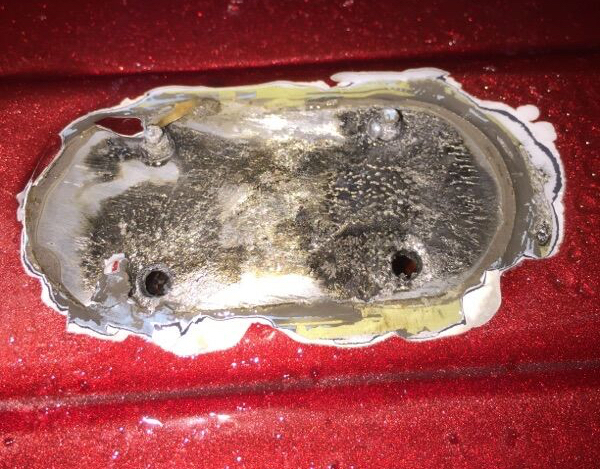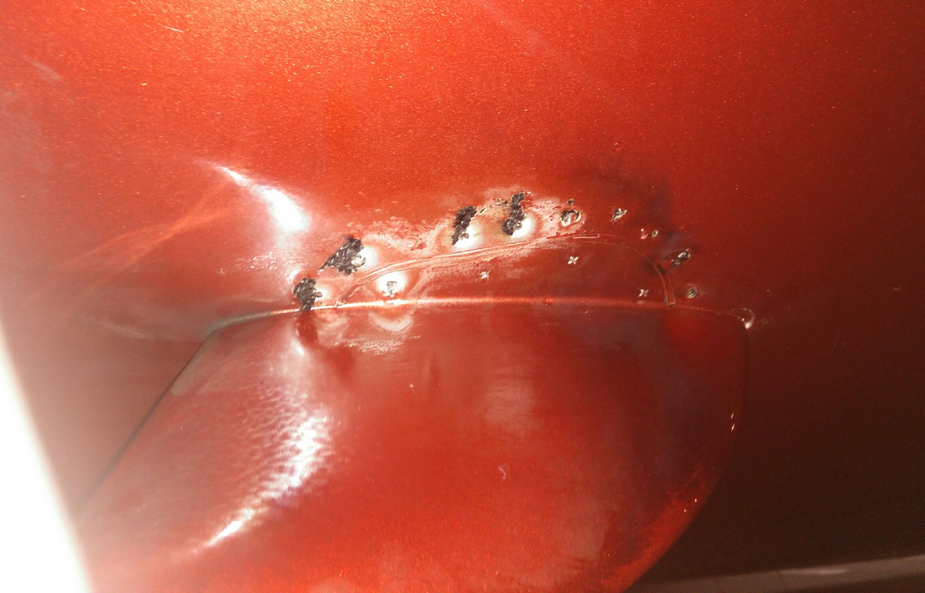Josh wrote:
is there an English version of that bulletin
I’m afraid no English Version. Essentially the report concludes: “The aircraft was in VMC on a VFR-flight in the vicinity of a TS-cell of little lateral size over the black forest, when it was – while descending- hit in 5000 ft MSL by a lightning strike, damaging the tailplane and compromising the maneuverability. Parts of the tailplane with discharge residues were found 1-1,5 km from the crashsite”
It did occur to me that the straps holding the SR22 TKS panels in place are not up to the job, which is why there is so much damage around them.
I wonder if the damage is only superficial, like the entry and exit wounds only (;-)) … or if there is internal damage too. Of course there’s a metal mesh in the Composite, necessary for IFR certification, but can there still be damage? To electrical components? Avionics?
C210_Flyer wrote:
I hope we are all here to learn from each others experiences and knowledge. Its that Ive had practical experience using this device for 30yrs in the muck since Im non-turboed. There are a lot of pilots who read (according to Peter) but dont contribute probably due to language reasons, that could come away with a misconception about SS limitiations as well as being struck by lightning. Fortunately the tread did continue to state that you dont have to be inside a TS to get struck by lightning. A stormscope will warn you of such an event. Please read the tread about “How useful is a Satellite WX or stormscope system for avoiding TS?”
NCYANKEE has made some good real world experience points along with Peter. I also explained in that tread Post #43, my reasoning why I prefer the SS over data linked lightening if I had to choose.
One thing to learn perhaps is that no matter what technology is onboard from an A380 to a Cub you may be struck by lightning…the real point of weather avoidance is to avoid the extreme turbulence (and perhaps hail) associated with a TS…
FWIW, I got struck by lightning in an A330 on Friday going into Atlanta.
We were on an RNAV arrival descending through 6,000 ft and saw a cell ahead on radar. It looked pretty dormant but we asked for a vector to avoid it anyway, which was granted. (Other aircraft were staying on the RNAV track ahead of us and flying through it.) A couple of minutes later (IMC) there was a loud bang and a flash. Everything looked OK so I made a quick PA and we landed.
The next day we found out that the strike had almost blown the cowling off the No.2 engine and the fire bottle for that engine had been fired. There was damage to the engine oil breather and a static wick at the back was missing. Our crew in the hotel, about 10 miles away, heard the thunder! Apparently it was the only thunder heard that afternoon.

Missing static wick

Damaged oil breather

Damaged cowling
Aviathor wrote:
C210_Flyer wrote:
A stormscope will warn you of such an event.
Oh, it warned me all right. It was just way too late. It went from one cell 20NM at 10 o’clock and another one at 2 o’clock to being surrounded by strikes. And I did not know what else was around me because non-turboed, I was in the muck.
From my experience what probably happened while IMC you probably wandered into a CU cell (cloud),it was rough Im sure but a true TS in a small plane most likely some feathers would have come off. It was probably in the very early stages of building. It might never develop into a full blown TS but rather into just a towering CU which is bad enough. But by then you would see more dots on the scope and more concentrated. At close range to a CU cloud the range is set to 200 mi. this way it picks up turbulence more easily. While in the CU (not a CB) cell the dots are scattered everywhere with no definition. Thereby indicating turbulence. Things do happen quickly and it can go from static dots indicating Turbulence to an actual lightning bolt. Its when you get a real tight pattern of dots 25 miles out that you have to start to make alternate plans.
AnthonyQ wrote:
ne thing to learn perhaps is that no matter what technology is onboard from an A380 to a Cub you may be struck by lightning…the real point of weather avoidance is to avoid the extreme turbulence (and perhaps hail) associated with a TS…
Exactly. Genau
I believe that Cirrus is now for sale. It would be interesting to understand what repairs have been possible, if any.
What is the reg? I wonder if the for-sale description says anything.
If the repair was done professionally then it arguably does not need to be disclosed, but I would still not buy it due to likely avionics issues down the road.
This issue must have been visited before because some BRS-pulled airframes have been repaired and returned to service!
Looks like nothing has been done on the aircraft. And it’s never been returned to flight conditions.
9 years without flying…
The damage must have been serious to prevent returning to airworthiness. Or the owner has so much money he doesn’t care. Where is it now? Outdoors or in a hangar?